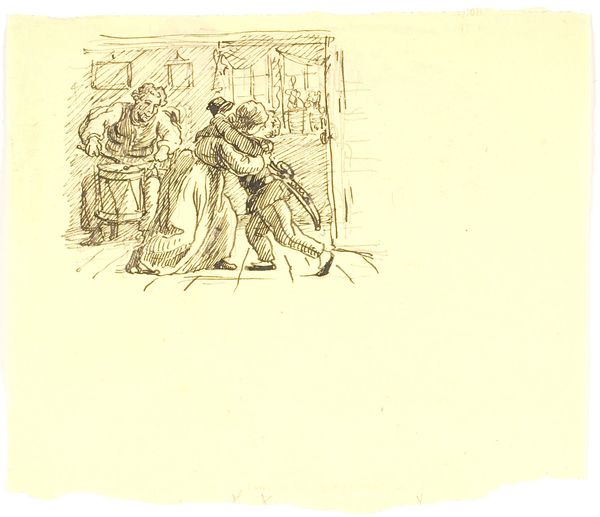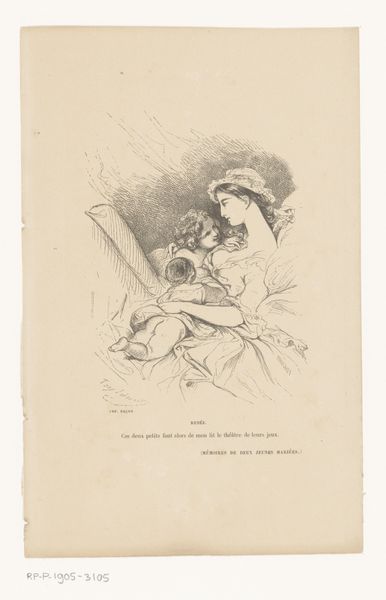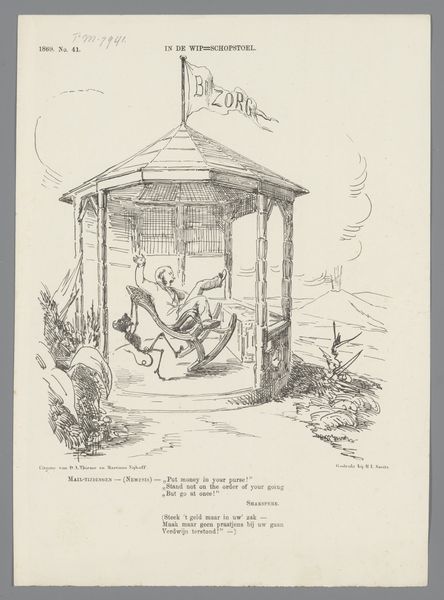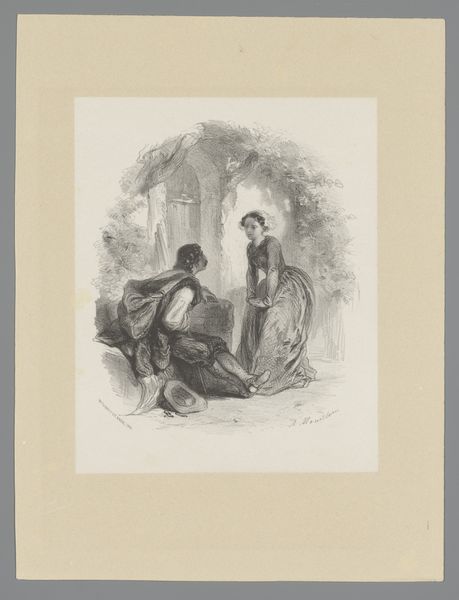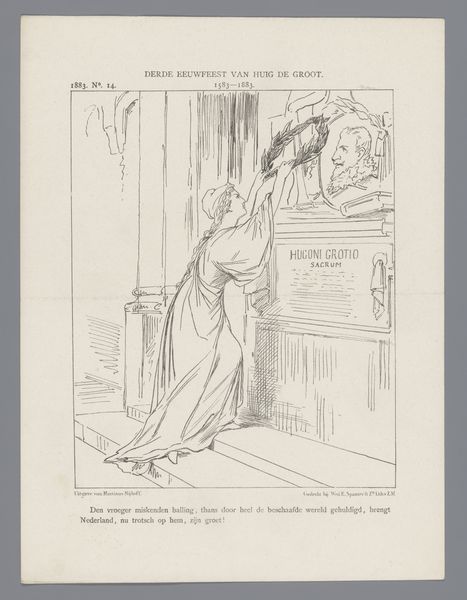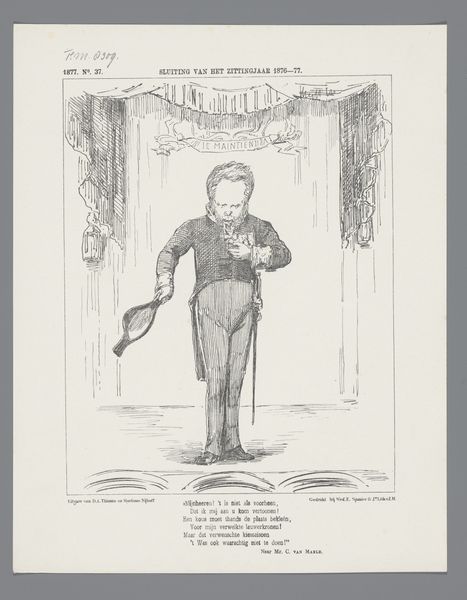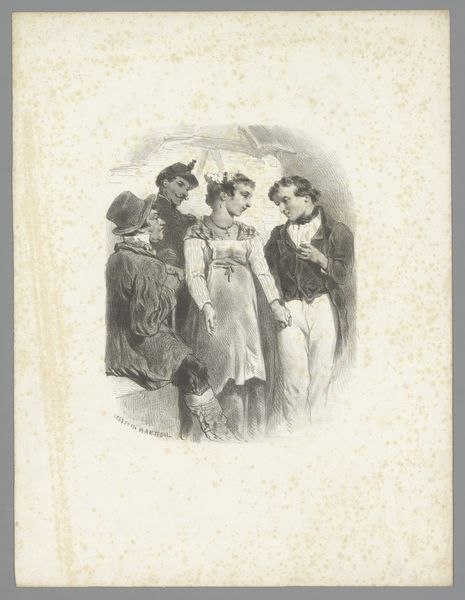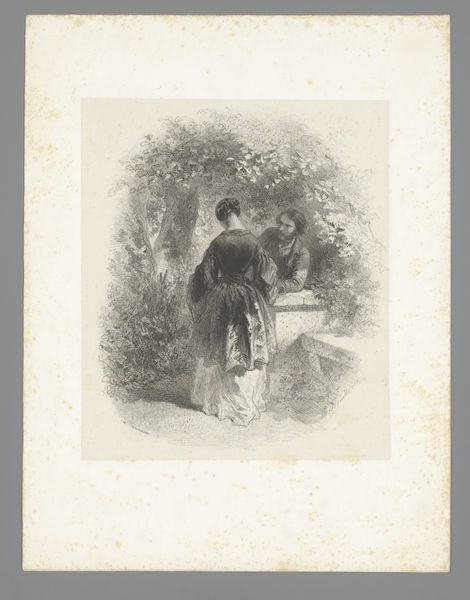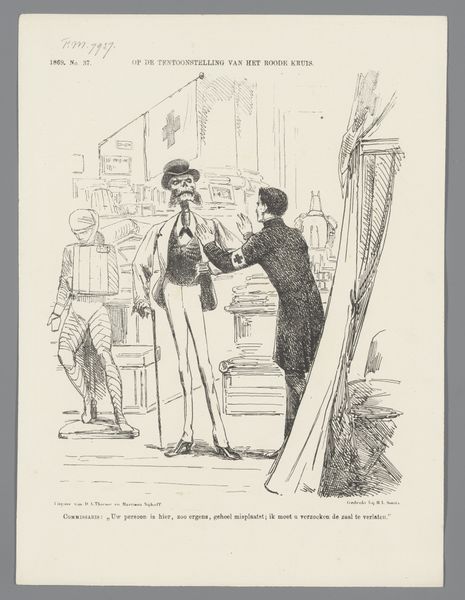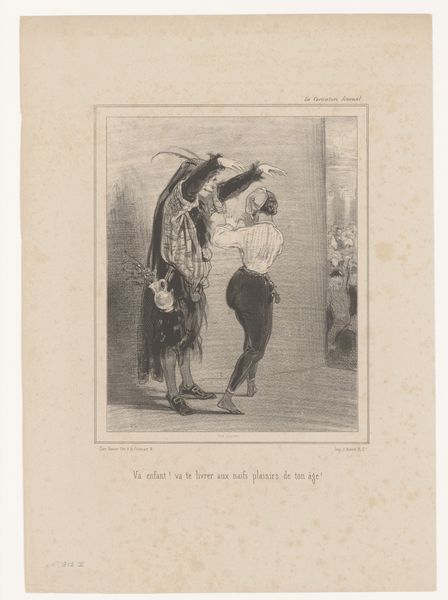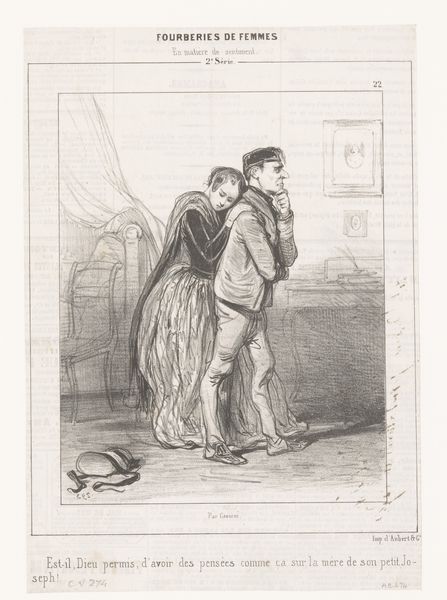
Spotprent nav de opening van de Tiende Nederlandsch Taal- en Letterkundig Congres te Den Haag, 1868 1867
0:00
0:00
Dimensions: height 275 mm, width 215 mm
Copyright: Rijks Museum: Open Domain
Curator: Let’s take a look at this whimsical drawing by Johan Michaël Schmidt Crans, titled “Spotprent nav de opening van de Tiende Nederlandsch Taal- en Letterkundig Congres te Den Haag, 1868,” made around 1867. It’s rendered in ink and is a print, a commentary perhaps on a specific event. Editor: It strikes me immediately as possessing an innocent, storybook quality. The lightness of the line work, the simplistic figures, it almost looks like a quick sketch from a child’s notebook. What do you make of the composition? Curator: Given the work's date, it seems like a wry commentary on the Tenth Dutch Language and Literature Congress in The Hague. Look at how the banner announcing the congress is placed, and consider the two figures in the foreground. What materials did Schmidt Crans have at his disposal? Was this commissioned, or part of a broader portfolio commenting on contemporary events? Editor: Note the confident economy of line. Look closely, and you see how much detail is conveyed with so few strokes. The drapery, the architectural details, the expressions on the figures—there’s a real formal control at play here. The overall effect has a kind of understated elegance despite being a caricature. Curator: The means of production are also relevant. As a print, the image could circulate widely. Was it featured in a newspaper, informing public opinion? Understanding the modes of distribution is crucial here. Also, it invites considering the social impact the event itself and its representation could have. Editor: Yet, the formal choices cannot be overlooked! The careful framing of the architecture, for example, draws the viewer's eye upwards, only to meet an impediment to one's view of an arch under construction or covered in drapery with symbols. Also, note how all lines converge on the characters with great control, highlighting not the location of the Congress, but these specific delegates of the era and what they were up to at the moment. Curator: Absolutely. It underscores how material conditions and social context invariably shape artistic expression and reception. Investigating the labour and dissemination helps to appreciate it in full! Editor: Agreed, yet this analysis into social impact cannot erase or demean an artist's contribution to line, depth, and meaning through compositional techniques and artistic insight. A keen marriage of form and matter, wouldn't you say?
Comments
No comments
Be the first to comment and join the conversation on the ultimate creative platform.


